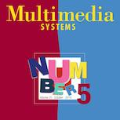In this work, we investigate a novel simultaneous transmission and reflection reconfigurable intelligent surface (RIS)-assisted multiple-input multiple-output downlink system, where three practical transmission protocols, namely, energy splitting (ES), mode selection (MS), and time splitting (TS), are studied. For the system under consideration, we maximize the weighted sum rate with multiple coupled variables. To solve this optimization problem, a block coordinate descent algorithm is proposed to reformulate this problem and design the precoding matrices and the transmitting and reflecting coefficients (TARCs) in an alternate manner. Specifically, for the ES scheme, the precoding matrices are solved using the Lagrange dual method, while the TARCs are obtained using the penalty concave-convex method. Additionally, the proposed method is extended to the MS scheme by solving a mixed-integer problem. Moreover, we solve the formulated problem for the TS scheme using a one-dimensional search and the Majorization-Minimization technique. Our simulation results reveal that: 1) Simultaneous transmission and reflection RIS (STAR-RIS) can achieve better performance than reflecting-only RIS; 2) In unicast communication, TS scheme outperforms the ES and MS schemes, while in broadcast communication, ES scheme outperforms the TS and MS schemes.
翻译:在这项工作中,我们调查一个新型的同时传输和反映可重新整合的智能表面(RIS)辅助多输入多输出输出下链接系统,研究三种实际传输协议,即能源分离(ES)、模式选择(MS)和时间分离(TS);对于正在审议的系统,我们最大限度地使用混合变量加权和加权率;为解决这一优化问题,建议采用区块协调下限算法,重新拟订这一问题,并以另一种方式设计预先编码矩阵以及传输和反映系数(TARCs)。具体地说,对于ES方案,预先编码矩阵采用拉格朗双向方法解决,而TARCs则使用罚款的 concave-convex方法获得。此外,拟议方法通过解决混合指数问题而扩大到MS计划。此外,我们用一维搜索和主要化-最小化技术来解决TS计划拟订的问题。我们的模拟结果表明:1) 同步传输和反射镜(STAR-IS)系统(STAR-RIS)可实现更好的业绩,而S-S-SMS-S-S-S-SMS-S-S-S-stststropropism;2,我们用S-S-stm-S-st-st-st-st-S-st-st-st-st-st-st-stmst-st-st-st-st-st-st-st-st-st-st-st-st-st-st-st-s-s-s-s-s-s-st-s-st-s-s-s-s-s-ststststmststststststststststststststmstmstmstmstmstmstmst-s-s-s-s-s-s-s-s-s-s-s-s-st-st-st-st-st-st-s-st-st-st-st-s-s-s-s-s-s-s-s-s-s-SIS);和s-s-s-s-s-s-s-s-s-s-st-st-st-st-st-st-st-st-st-st-st-st-st-st-st-st-st-st-st-st




